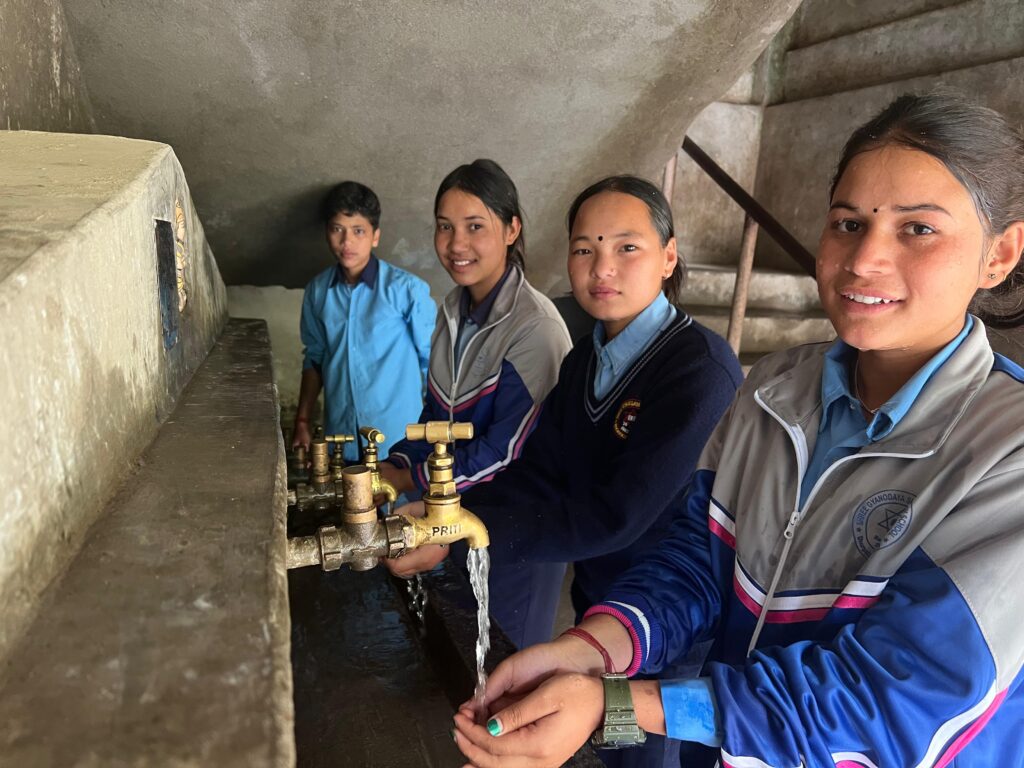
1. Follow-up observations
The Darvish Yu Water Fund has implemented 17 projects, resulting in improvements to water and sanitation conditions at project sites. The object of follow-up observations conducted a few years after completion of the projects is to understand the current and changing situations regarding water problems. By learning from the effects of our completed projects, we will improve future projects. The follow-up observations were conducted with our local partners, focusing on two key points:
– The current condition of facilities constructed by the projects and the water and sanitation situation at the project sites
– Changes to the beneficiaries
2.Follow-up observations of Darvish Yu Water Fund15th project: Nepal
2.1Outline of the project
1)Project name: Water, Sanitation and Hygiene Promotion at Gyanodaya School
- Local Partner: Nepal Water for Health(NEWAH)https://newah.org.np/
- Project period: January to December 2022
- Project site: Gyanodaya School, Bobang village, Ward no.7, Baglung district, Dhorpatan municipality, Gandaki province, Nepal
- Number of expected beneficiaries: 838 (17 teachers, 376 boys-376, 445 girls)
- Indirect beneficiaries: 2000
- Total cost: 5,138USD(4,112.20USD from Darvish Yu Fund)
2)Background
- Gyanodaya Secondary School, established in 1957, is one of the oldest schools in Bobang village. Its existing water access point was non-functional.
- The school had suffered from a scarcity of water for a long time. Even the school’s toilet was not in use.
- Hand washing and other hygiene behavior was impossible without an adequate water supply, often causing water-borne diseases among the students.
- Students had to go home or to a nearby stream to obtain drinking water. This affected attendance, hampering their studies.
3)Main activities of the project
- Construction of one intake facility (at a spring 1km away)
- Construction of one reservoir tank (4m3) and pipeline
- Installation of two tap stands and water connections to school latrines
- Training and campaign on WASH for Child Club members, the School Management Committee, the School WASH Committee, and local residents
- Maintenance training for a caretaker
4)Outcomes
- Increased and more inclusive access to improved water, sanitation, and hygiene services at Gyanodaya Secondary School
- Decrease in cases of water-borne diseases among the students
- Increased attendance of students
- Improved hygiene behaviors of students, teachers, and local residents
5)Projecrt photos
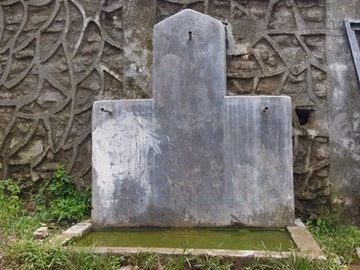
Existing non-functional water point
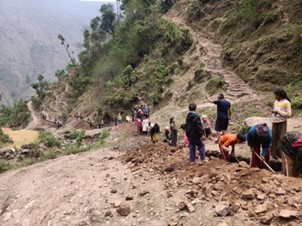
Community contributing to pipeline laying
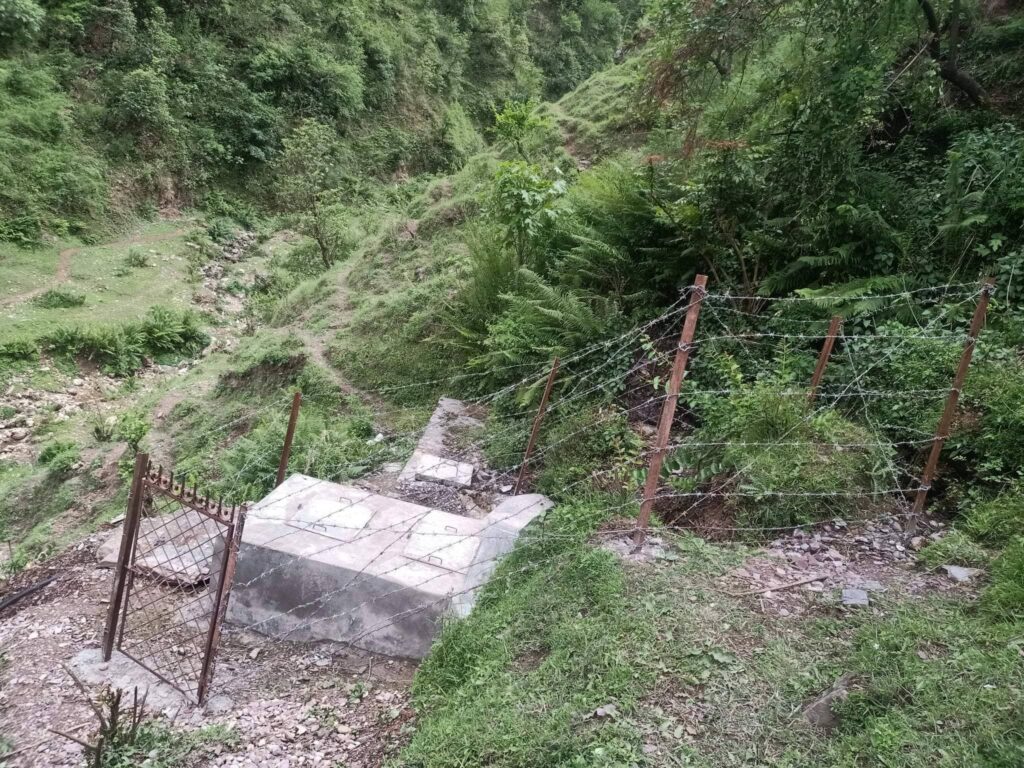
Completed intake facility
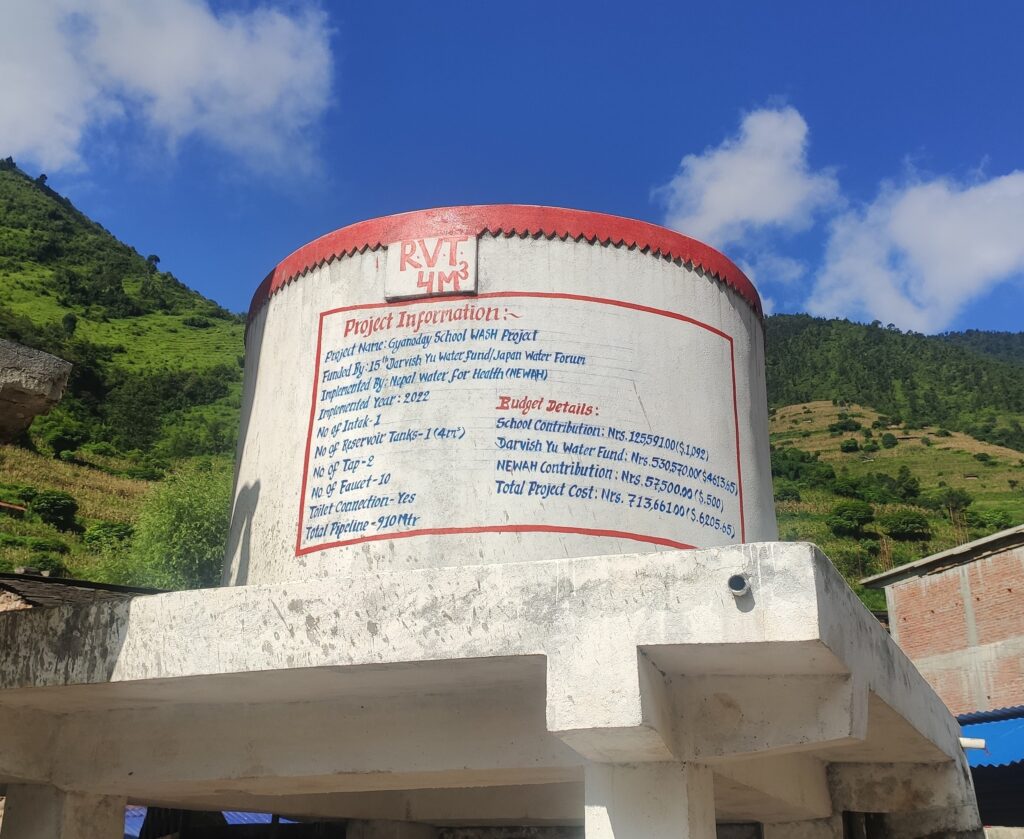
Reservoir tank (4m3) displaying project information
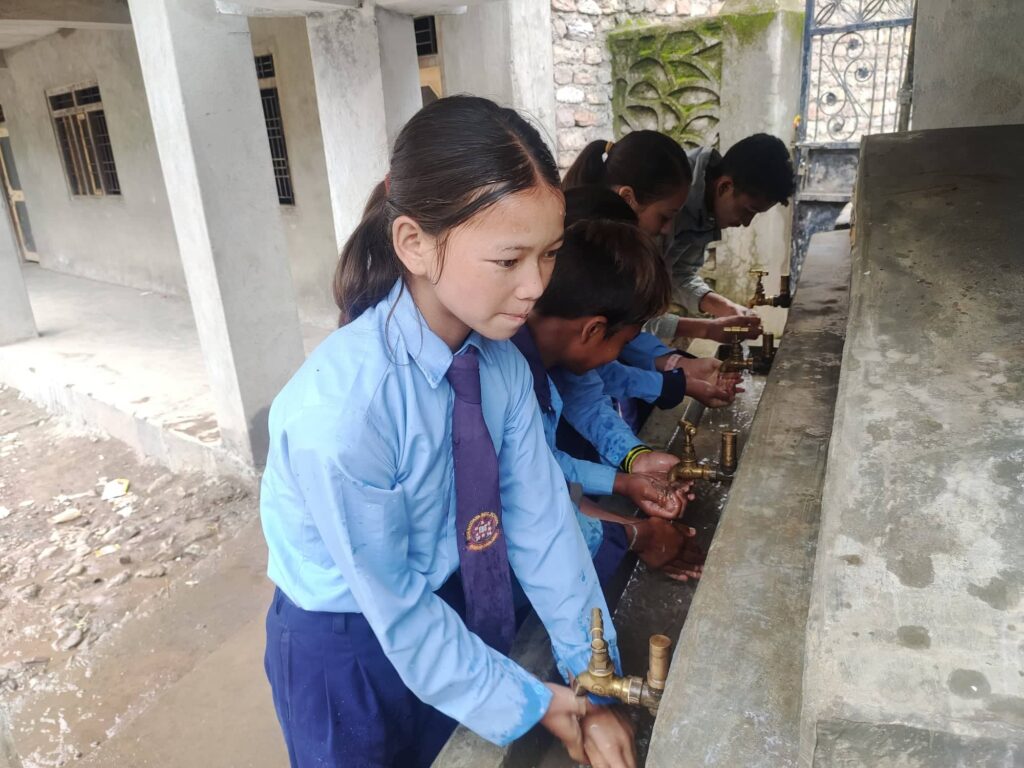
A tap stand providing clean water
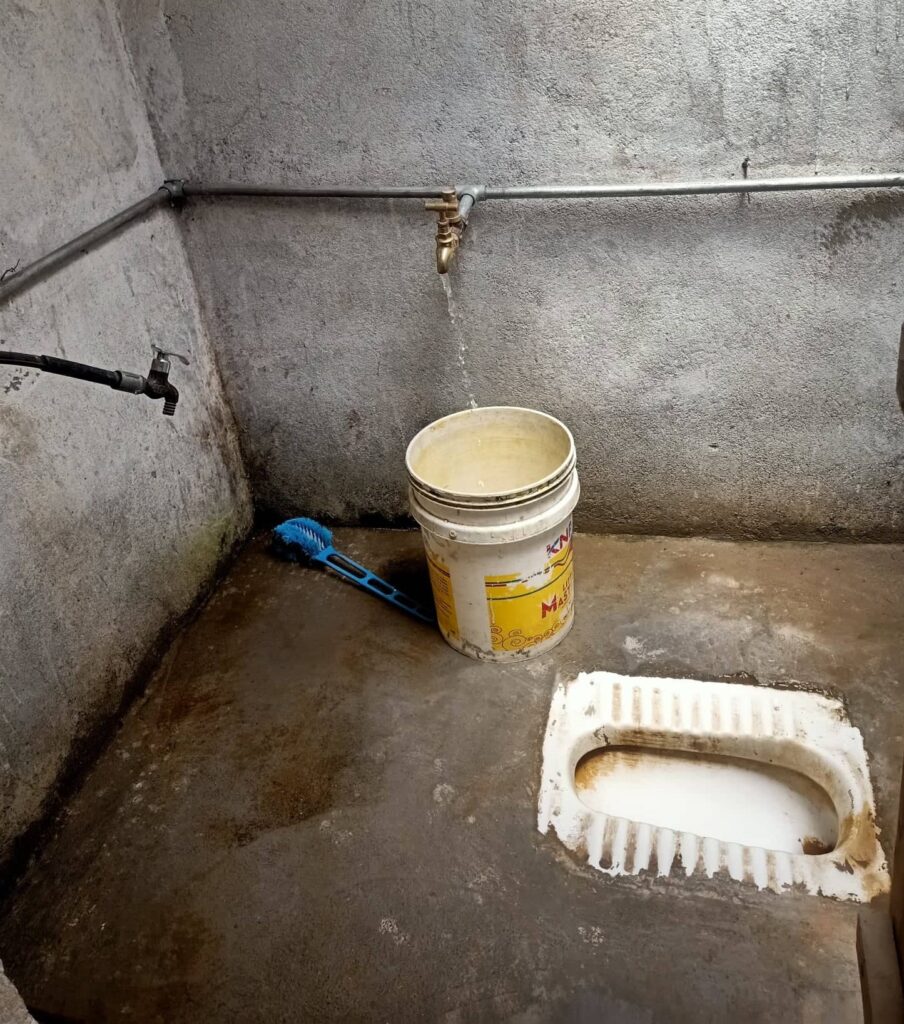
A water-connected school latrine
2.2Follow-up observation report
Reported by: Mr. Binod Koirala(Planning, Monitoring and Reporting Officer)
Date of follow-up visit: 18-19 August 2025
1)Current situation regarding deliverables
- The intake structure is functioning properly and in good working condition, supplying water to the reservoir tank effectively. The water supply is sufficient throughout the year. The fencing around the intake is in good order, however bushes have overgrown around the intake.
- The reservoir tank has no visible leakage or structural damage. However, the information painted on it has faded through exposure to rainwater.
- The five faucets on the two tap stands were mostly functioning, providing adequate water supply. Three faucets had been damaged. Two had been replaced by the school, while one still requires replacement. Drainage near the tap stands occasionally gets blocked and needs regular cleaning.
- The water connection to the school latrine is supplying water and 4 faucets are fully functional.
- The replaced and newly constructed facilities at Gyanodaya Secondary School have been supplying adequate water for both drinking and sanitation purposes throughout the year. The Stakeholders, including students, teachers, and the caretaker, report that water availability has been consistent even during the dry season, supporting improved hygiene and classroom cleanliness.
| Intake | Reservoir tank | Tap stands | Water connection to school latrine | |
| Quantity | 1 | 1 | 2 (10 faucets) | 1(4faucets) |
| Functioning as planned ? | Yes | Yes | Mostly (1 non-functional) | Yes |
| Damaged items | 0 | 0 | 1 faucet | 0 |
| Condition / Level of damage | N/A | N/A | Moderate | N/A |
| Reasons for damage | N/A | N/A | Physical wear and usage | N/A |
2)Operations and maintenance
- The Gyanodaya Secondary School Management Committee has provided sufficient information and support for managing the WASH facilities, including carrying out minor repairs such as replacing damaged faucets. Members of the School Management Committee hold meetings every month and come to the school a few times every month. Regular visits after the project’s final reporting have confirmed the school’s commitment to proper operations and maintenance.
- The team observed that the caretaker has been fulfilling his responsibilities effectively. He has replaced the damaged faucets and ensured proper functioning of the system. The school keeps some spare parts, and he has good knowledge of repairs and maintenance.
- The team found that the School Management Committee has been utilizing school administration funds to repair the system. This reflects a strong sense of ownership on the part of the school and provides a reliable mechanism for sustaining the functionality of the project. The school administration has been covering costs themselves and has not received any funding from the local government.
- The two tap stands and two separate connections for the girls’ and boys’ toilets are functioning well, supplying sufficient water for drinking and sanitation. However, during the observation visit, soap was not available and further inquiry disclosed that, due to the large number of students and a lack of funding, keeping soap regularly in toilets is difficult.
- After completion of the project NEWAH and a third party (the District Health Office) conducted Water quality tests and confirmed that the water was safe. There have been no water quality tests conducted by the School Management Committee since then. NEWAH suggested conducting water quality testing at least once a year, particularly during the monsoon season.
- Currently, the children’s club is playing an active role, conducting regular cleanliness campaigns, including regular cleaning of the school compound, led by students with guidance from teachers and the caretaker.
- The community surrounding the school still faces a lack of water during the dry season. The school gives access to water to the community free of charge, under the condition that they observe proper utilization and maintain cleanliness of the school taps.
3)Changes for beneficiaries
- The interview disclosed that there are now very few cases of diarrhea and stomach-related illnesses among students. Improved access to safe drinking water, functional toilets, and handwashing facilities have all contributed to hygiene promotion.
- Students do not need to go home for water anymore, allowing more time for studies and school activities.
- As there is no proper water system in the village, around 15-20 households around the school have access to the school’s water system during the dry season, easing their lives. The community near the school has also become more engaged in supporting school cleanliness, reflecting an increased sense of ownership and collective responsibility.
- The students are practicing better hygiene, especially regular handwashing, and they are taking these habits back home, which encourages other family members to adopt similar practices.
- Training conducted by the children’s club has led to increased awareness of water-borne diseases and improved personal hygiene practices. The children have become aware of the advantages of regular handwashing during critical times and of the proper use of toilets.
- Since completion of the project, the beneficiaries have not faced any disputes or conflicts over the WASH facilities, as sole ownership of the system is taken by the school.
4)Voices of the beneficiaries
(1)Ms. Akriti Budha Magar, 14 years old, student
- Life has become convenient after installation of the tap. There are ten faucets in two tap stands, useful for washing our hands and faces. The taps are mounted in high and low positions, making it easier for both big and small students to use them. There is also adequate water in the toilet.
- We now don’t have to go far for water. Previously we had to go a little far to use the community water tap. Availability of water within the school has made things convenient. There are no water or sanitation problems. (It is about a half-hour walk from the school to the community or public water tap.)
(2)Mr. Him Bahadur Kayat, 48 years old, principal
- Within a month of contacting NEWAH, we were able to start on the water system project. The water system has made life easier for both students and teachers.
- Previously, the children had to go far and even had to leave their classes just to drink water. Now they can clean their hands and faces themselves when they get dirty while playing. There are no water problems in the school. The water system is functioning properly.
(3)Mr. Nim Bahadur Kayat, 50 years old, School Management Committee member
- We feel very grateful towards NEWAH for constructing the water system. It has made life convenient for the students, as it is accessible to all of them, big and small.
- There are a lot of differences between before and after the project. The students used to go to the public tap, which was for away, and for the toilet they used to go beside the river as there was no water in the school’s toilet. Now there is enough water in the toilet and there is no problem regarding drinking water as well. Now the students are satisfied with the sanitation and hygiene facilities. Before, the students used to skip classes with the excuse of getting drinking water. They don’t do that anymore. There have not been any water problems since installation of the facilities.
(4)Mr. Him Shankar Bhandari, 42 years old, caretaker
- There have not been any major problems with the water system since its construction. Minor repairs are done regularly. I have replaced two faucets to date due to wear and tear. Sometimes there are problems with drainage blockage.
- He has been doing his job voluntarily as he is the caretaker/ office helper at the school. He can replace the taps and carry out minor repairs himself without external assistance.
- He said that they can drink clean water within the school premises and don’t have to carry water from a far-off public tap. He used to travel 5-6 times to fetch water.
(5)Mr. Dhan Bahadur Adai, 52 years old, Dhorpatan municipality, ward no.7 chairperson
- The water system constructed three years ago is functioning properly. The students don’t have to travel far, and it has become easy for them to access water.
- Before construction of the water system, the students used to go to the public tap or spring source, or they would go home. Now they can save time that can be used for their studies. There are no problems related to water or sanitation in the school currently. However, sometimes there are drainage problems.
5)Photographs of the follow-up survey
(1)Intake facility inspection, school visit
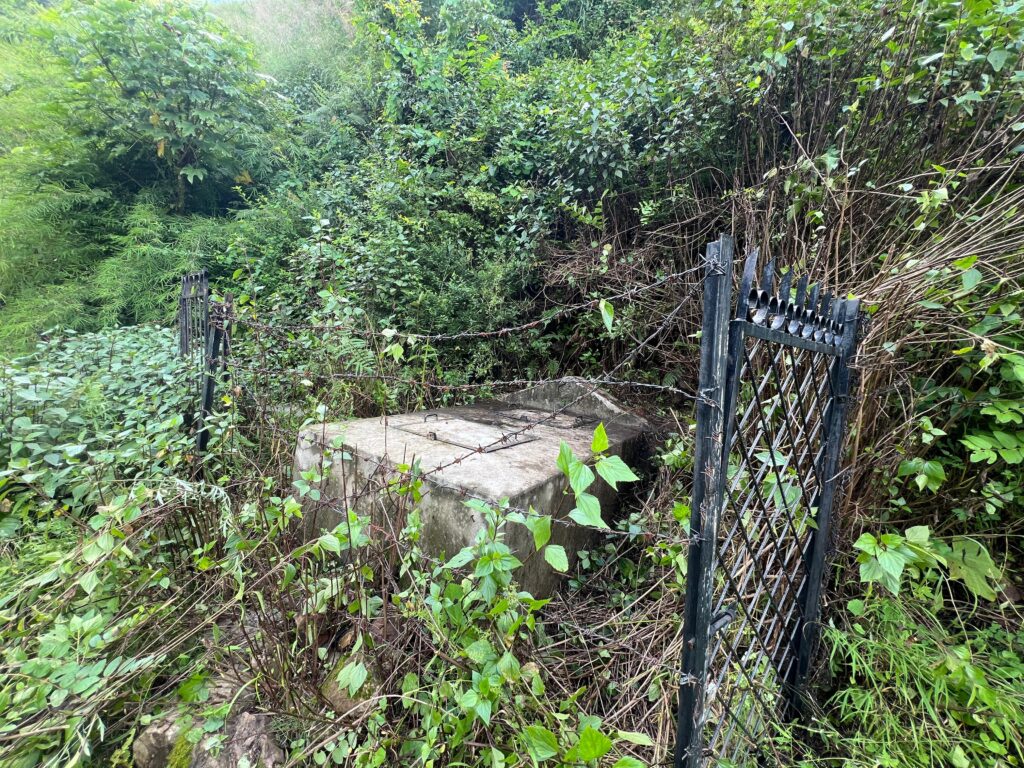
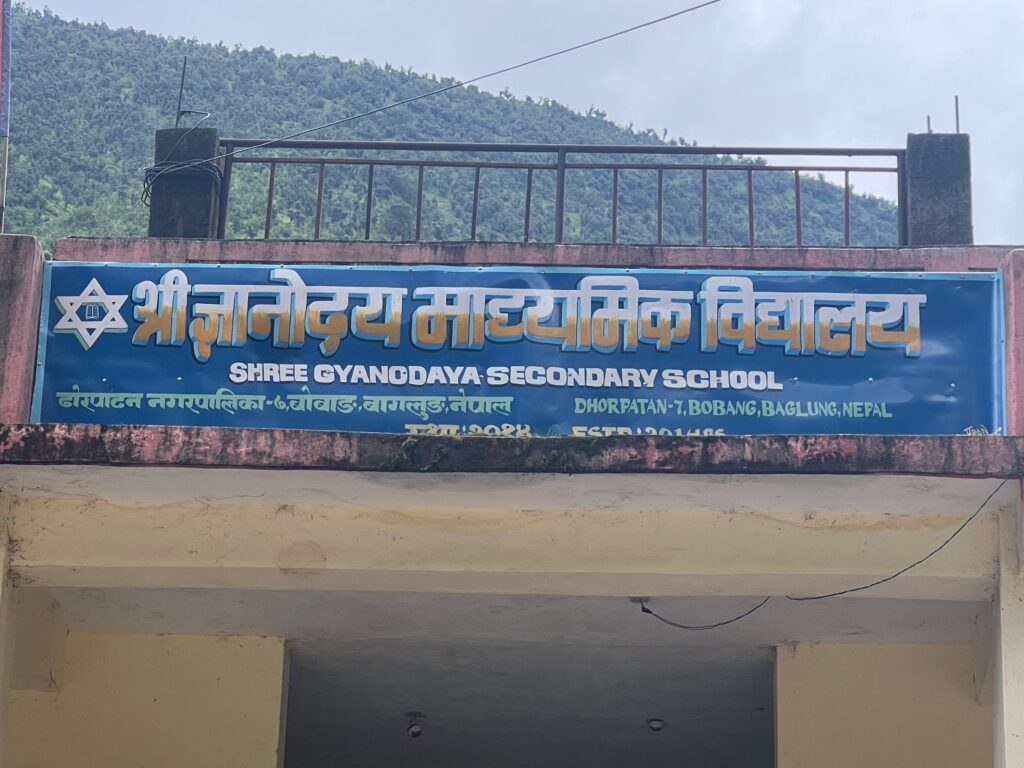
(2)Deliverable photos in school
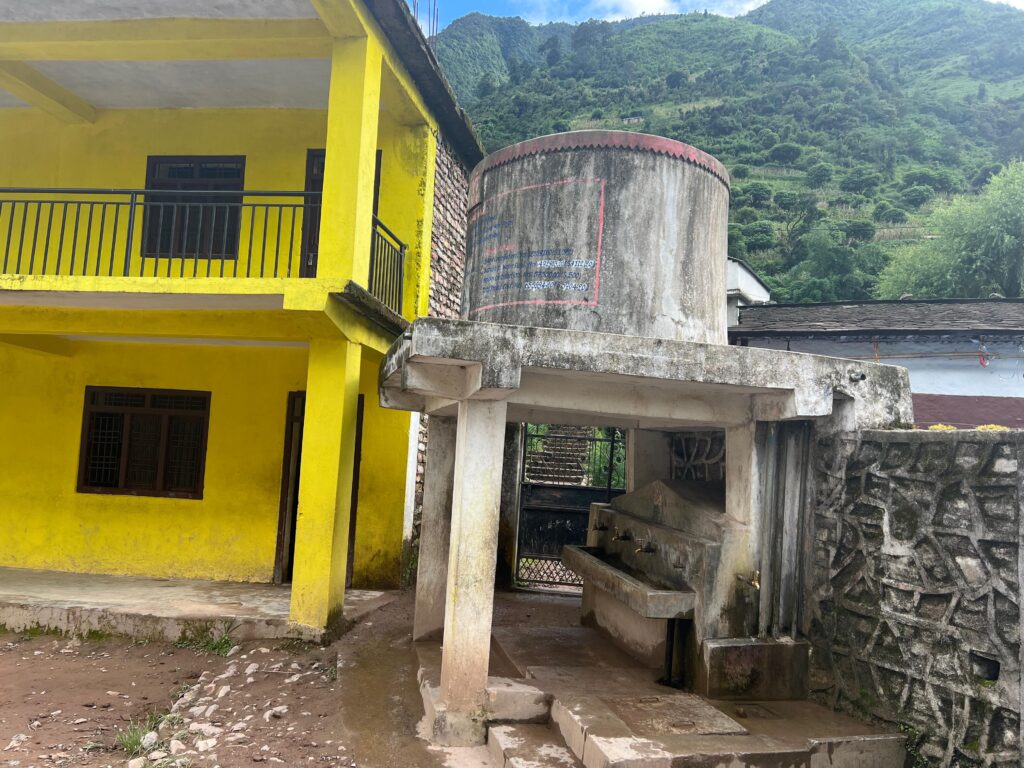
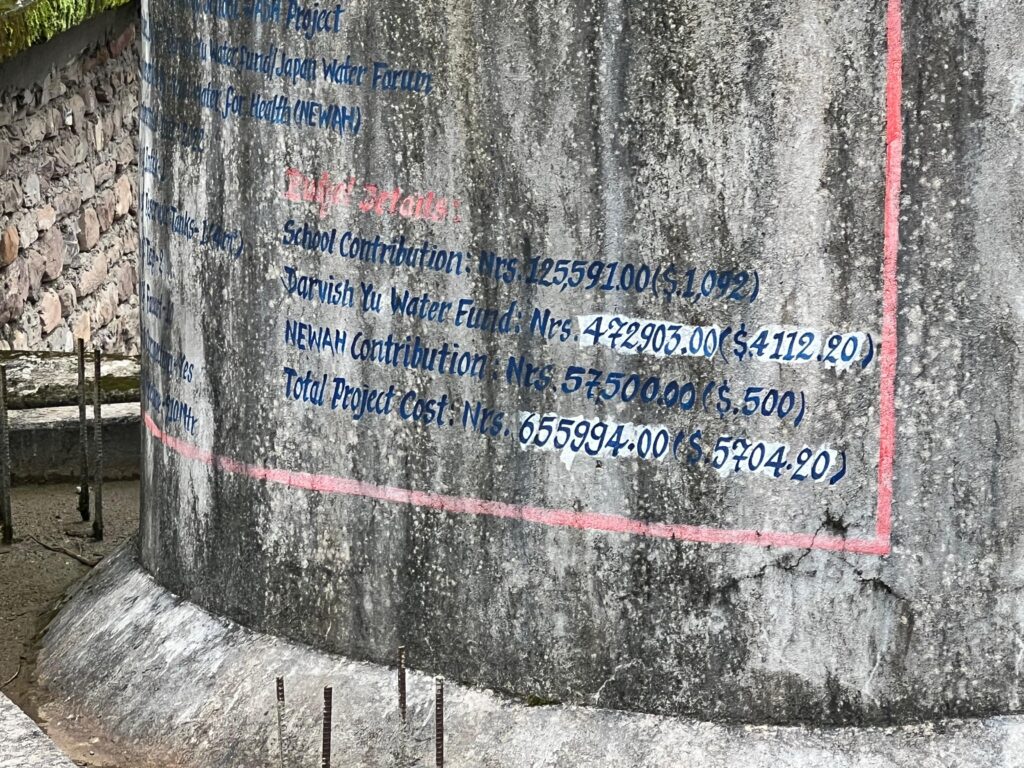
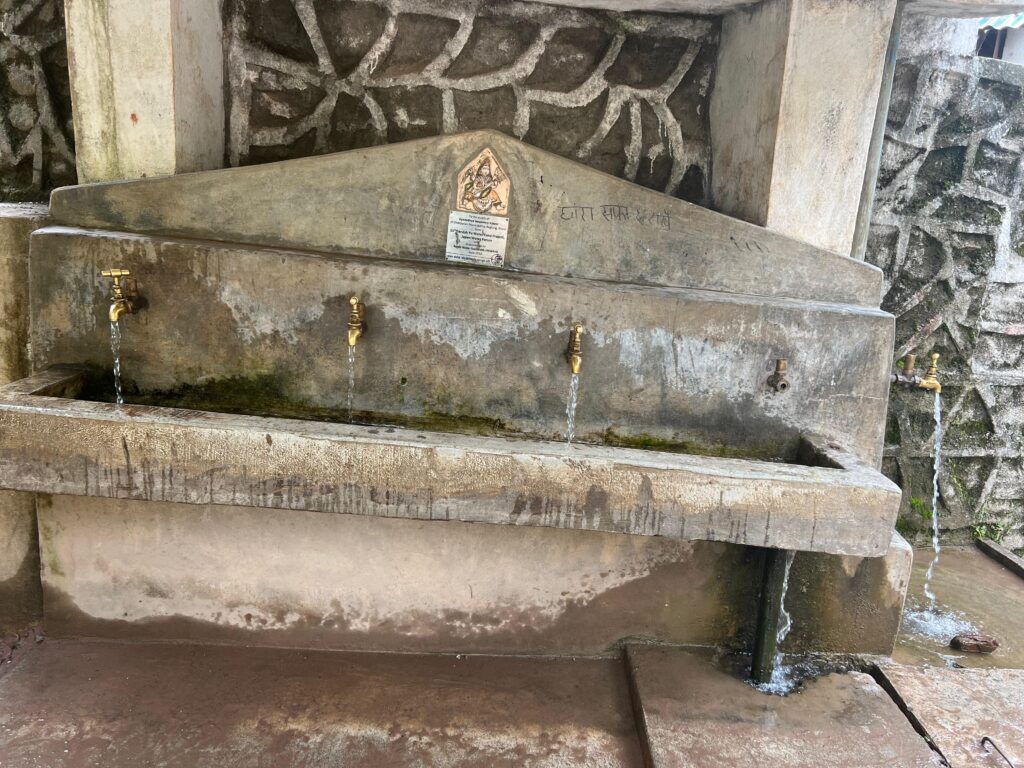
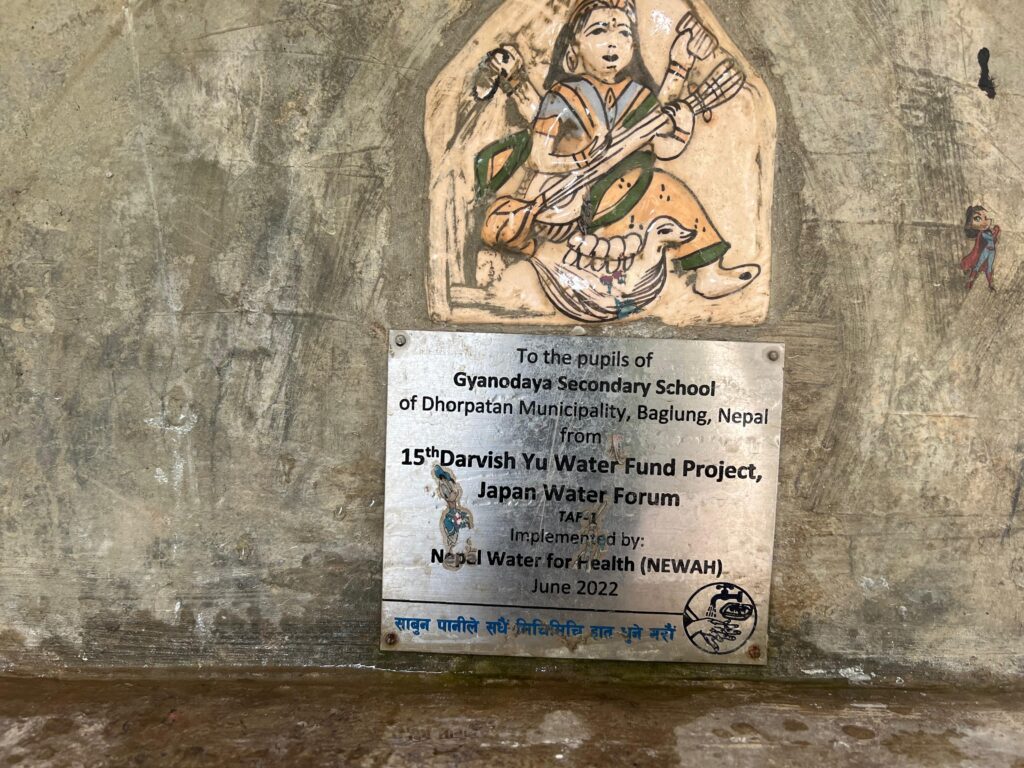
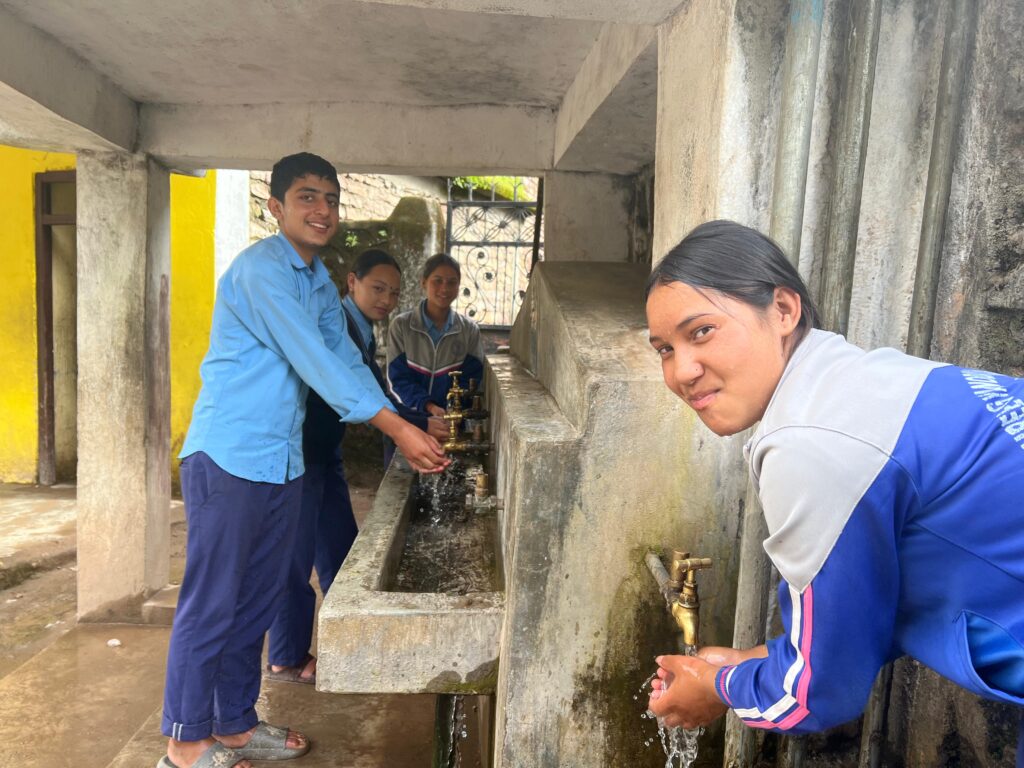
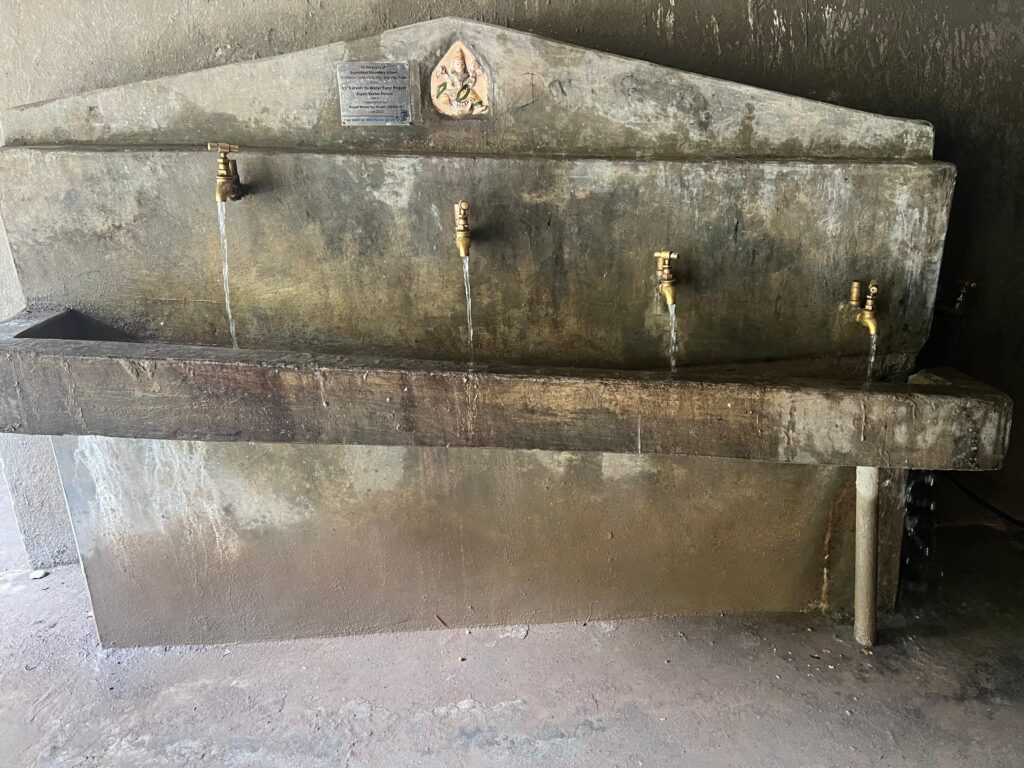
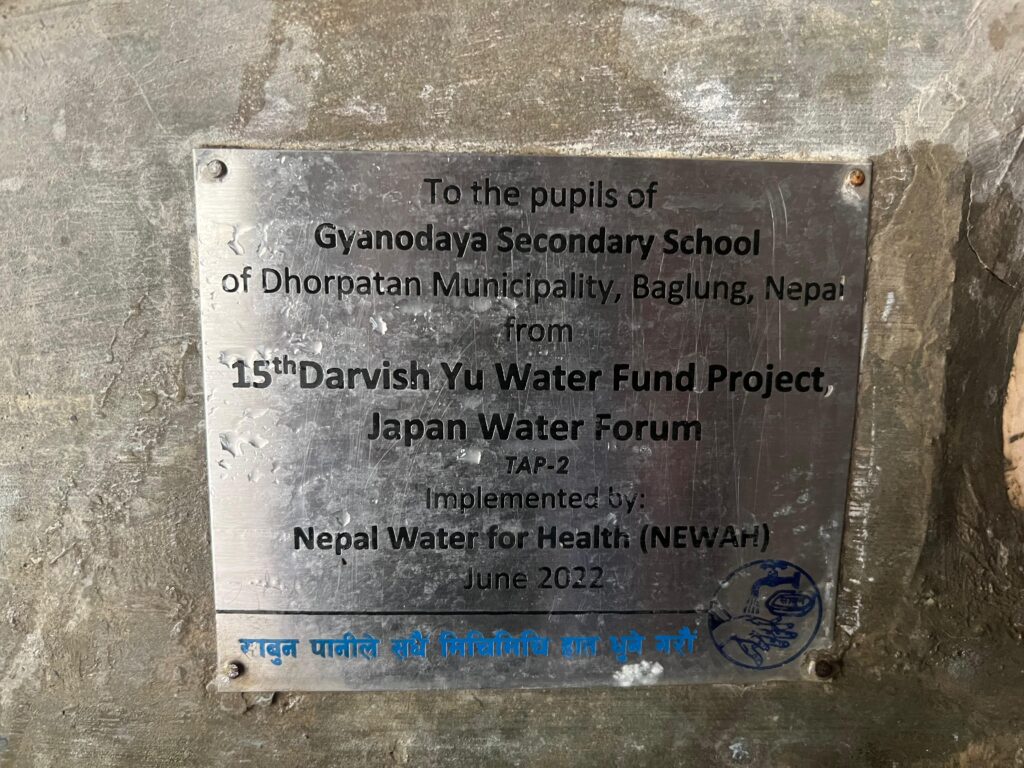

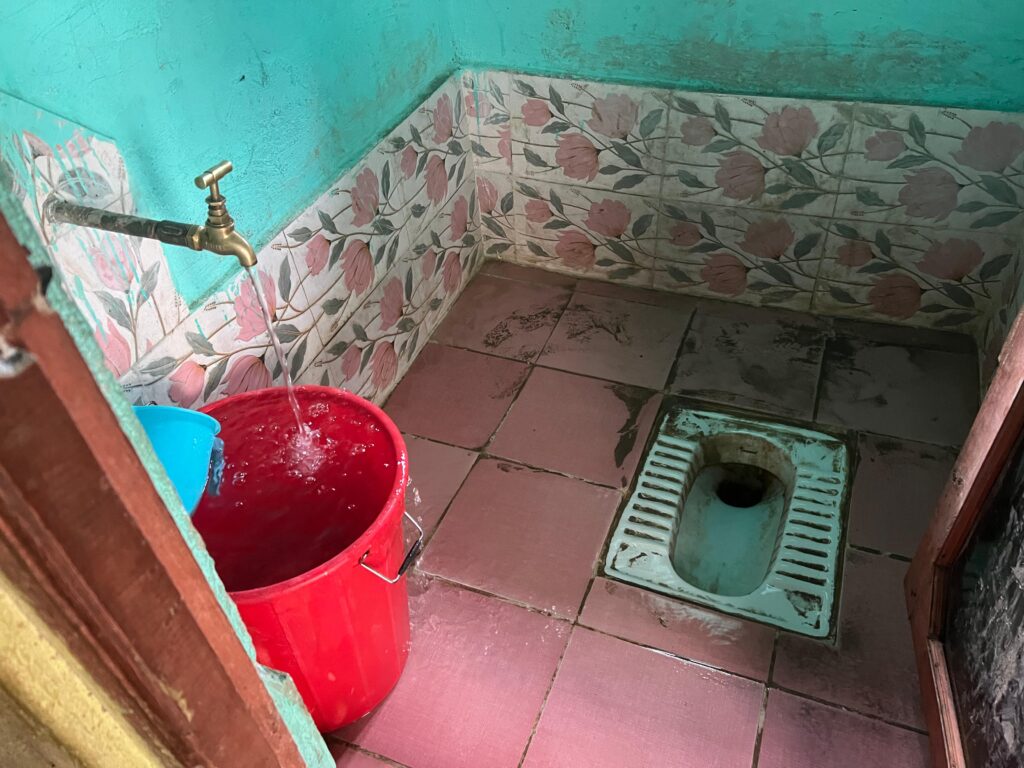
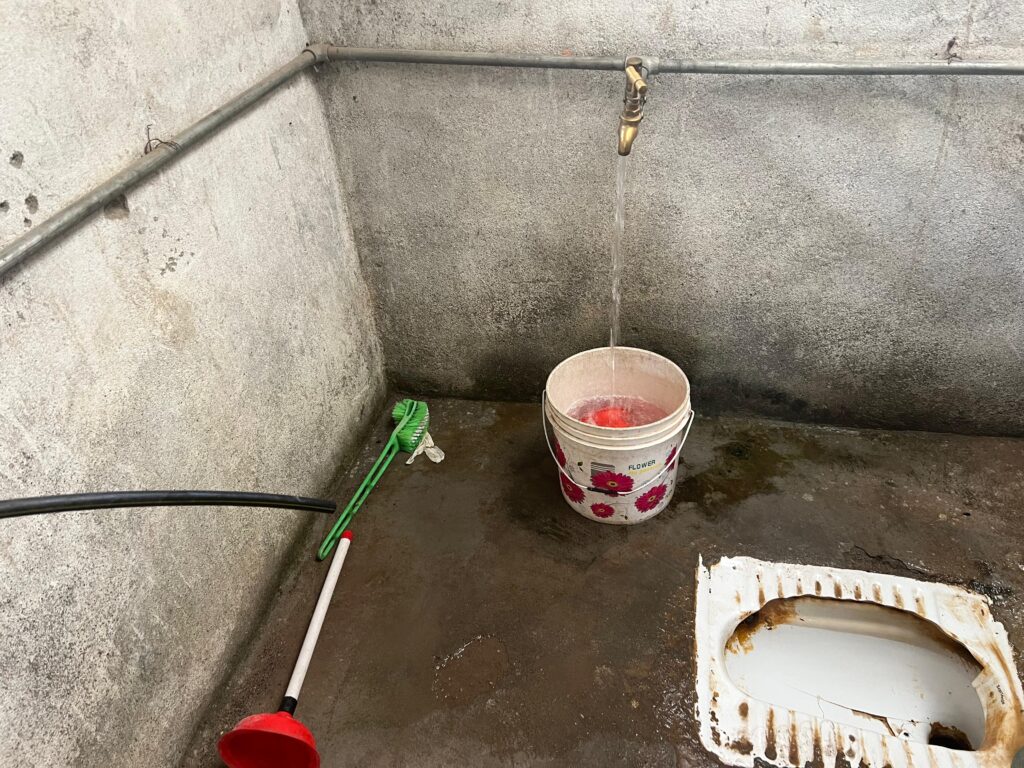
(3)Interview photos
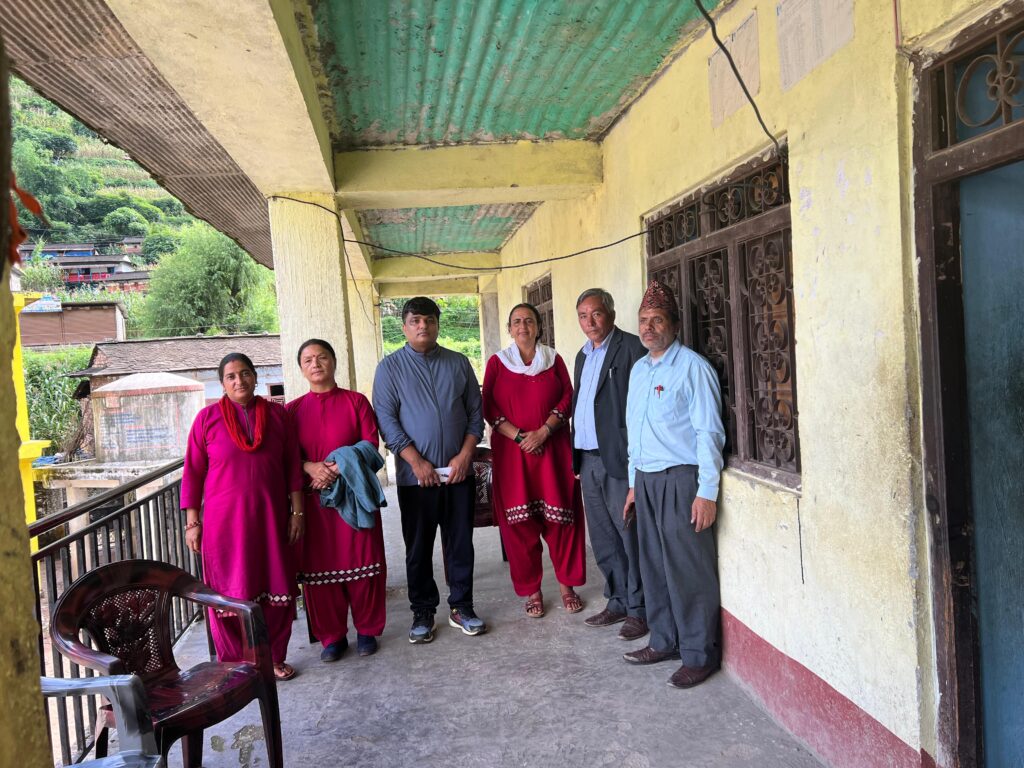
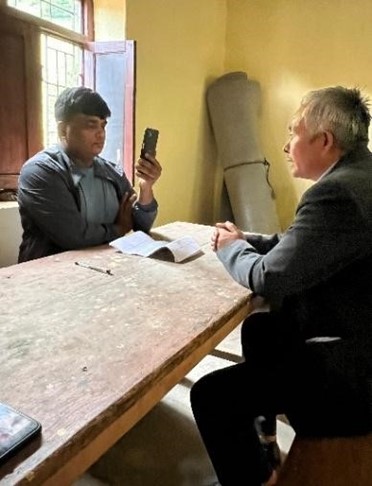
Secondary School
6)Others
NEWAH conducted a follow-up visit around 2022, providing some technical support to open the blocked drainage. The school requested pipes (50 mm, 50 meters) for drainage management in 2023, and NEWAH was able to provide support in July 2025 for proper management of the drainage.
3.Summary
Observations of the follow-up survey reported that all facilities installed by the Fund are being used, are functioning, and are in good condition. The school is conducting good operations and maintenance of the facilities, with the help of the children’s club. The community surrounding the school has become more engaged in supporting school cleanliness activities, as the school now provides access to safe water during the dry season. Regular visits by NEWAH since the project’s final reporting have confirmed the school’s commitment to proper operations and maintenance, enabling the Fund to receive good feedback in a cooperative atmosphere. With deep appreciation for the contirbution of Mr. Darvish Yu and other supporters, we would like to carry on this program.
▼Previous article: 2023.1.17Darvish Yu Water Fund: Completion report of the 15th Project in Nepal▼
https://www.waterforum.jp/en/news/20228/
▼For more information on the Darvish Yu Water Fund▼
https://www.waterforum.jp/en/what-we-do/darvish/
(Reported by Takejiro Suzuki, Project Manager)
